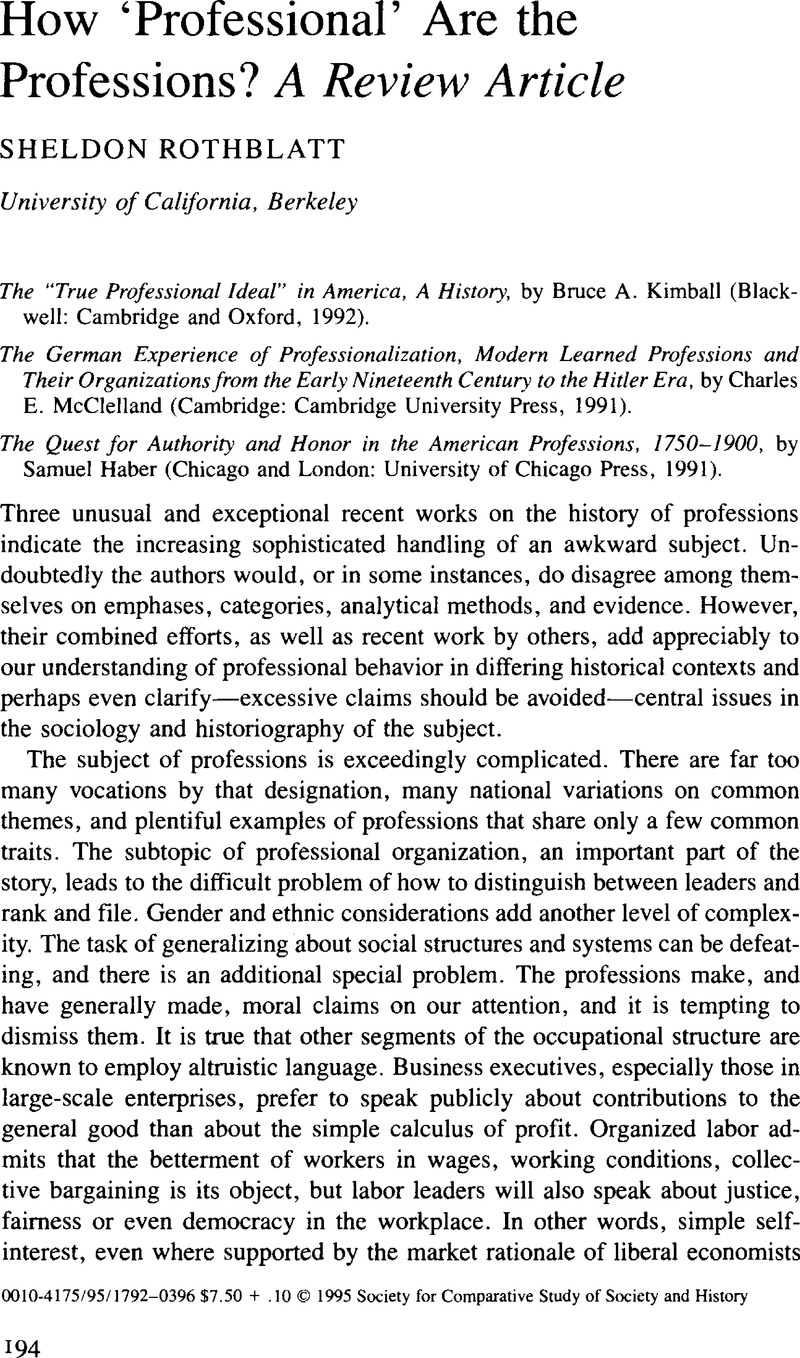Article contents
How ‘Professional’ Are the Professions? A Review Article
Published online by Cambridge University Press: 03 June 2009
Abstract

- Type
- CSSH Discussion
- Information
- Copyright
- Copyright © Society for the Comparative Study of Society and History 1995
References
1 Perkin, Harold, The Rise of Professional Society, England since 1800 (London and New York: Routledge, 1989).Google Scholar
2 Perkin, Harold, Key Profession, the History of the Association of University Teachers (New York: A. M. Kelley, 1969).Google Scholar
3 Perkin, Harold, The Origins of Modern English Society, 1780–1880 (Routledge: London, 1972), 340ff.Google Scholar
4 Mannheim, Karl, Ideology and Utopia (New York: Harcourt, Brace and World, 1936), 155: “But for that matter certain groups of the officials and the so-called liberal professions are also members of the intelligentsia. … Participation in a common educational heritage … tends … to unite the individual educated people on the basis of the education they have received.”Google Scholar
5 As in Torstendahl, Rolf, “The Transformation of Professional Education in the Nineteenth Century,” in The European and American University since 1800, Historical and Sociological Essays, Rothblatt, Sheldon and Wittrock, Björn, eds. (Cambridge: Cambridge University Press, 1993), 110.Google Scholar
6 The problem of defining the state always needs to be considered. The word has less relevance to the history of some countries than to others, especially the United States and other nations with “liberal” constitutions—for example, mid-Victorian Britain. Where the state is neither centrist nor dirigiste, government decisions are uncoordinated and less the outcome of specific policies than a bewildering process involving separate agencies, departments, legislative bodies, and semi-public boards and commissions.
7 Burrage, Michael, “From Practice to School-Based Professional Education: Patterns of Conflict and Accomodation in England, France, and the United States,” in Rothblatt and Wittrock, The European and American University since 1800, 142–90.Google Scholar
- 11
- Cited by


